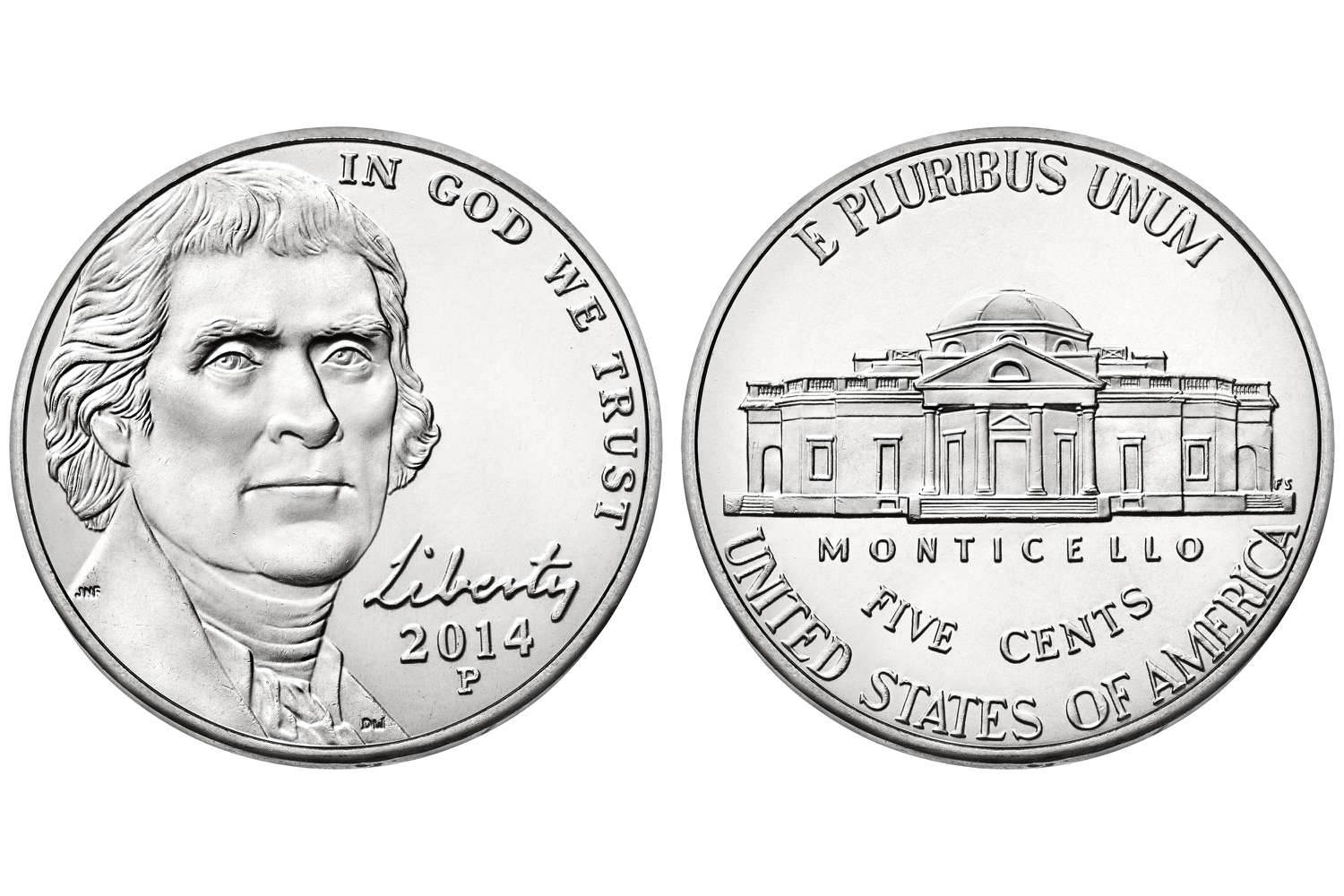Nickels, one of the most common coins in circulation, are often overlooked due to their small size and value. However, these five-cent pieces can add up quickly when accumulated over time. If you’re wondering how much your stash of nickels is worth or simply curious about the history behind this coin, this article will provide you with all the information you need.
From its introduction in 1866 to its current design featuring a portrait of Thomas Jefferson on the obverse side and Monticello on the reverse, nickels have undergone various changes over time. Despite its consistent five-cent value, there have been numerous rare editions and errors that have made some nickels worth significantly more than others.
Explaining the worth of nickels
Nickels, also known as five-cent coins, may seem insignificant compared to other denominations like quarters or dollars. However, their worth should not be underestimated. As of May 2021, each nickel contains 25% nickel and 75% copper, making its metallic value alone worth around three cents.
In addition to their metallic value, nickels are still widely used in everyday transactions. Despite the rise of digital payments and credit cards, many small businesses and vendors still rely on cash transactions – and often give change in nickels. Moreover, nickels are an essential component of coin rolls for banks and businesses that handle large amounts of cash regularly.
Overall, while a single nickel may not seem like much on its own, it’s important to recognize their collective worth as both a form of currency and a commodity with intrinsic value beyond just its face value denomination.
The composition of nickels:
Nickels are one of the most common coins in circulation and are worth five cents each. They are made up of a combination of metals, primarily copper and nickel. Specifically, the composition of a modern-day nickel is 75% copper and 25% nickel.
The current composition has not always been consistent throughout history. In fact, prior to 1946, nickels were made from a combination of copper, silver, and manganese. During World War II, there was a shortage of these metals which resulted in the production of nickels made from an alloy known as “war nickels” that contained 35% silver.
Despite fluctuations in composition over time, nickels have remained an important part of currency exchange for decades. While their value may be small compared to other forms of currency or investments, they remain highly accessible and continue to hold significance as both monetary assets and historical artifacts reflecting changes in metal production throughout history.
The materials used to make nickels
Nickels are a common currency used in the United States, often used for small transactions and as change. The value of a nickel is five cents, and they are made primarily from a combination of copper and nickel. In fact, each nickel is composed of 75% copper and 25% nickel.
The process of creating nickels involves several steps. First, a blank disc made from an alloy of copper and nickel is created. Then, the blank is heated to soften it before being stamped with the image of Thomas Jefferson on one side and Monticello (Jefferson’s home) on the other. Finally, the finished coins are inspected for quality control before being distributed into circulation.
While the majority of nickels contain only copper and nickel, some special edition coins have been produced with additional metals such as silver or gold plating. These rare coins can be worth significantly more than their face value to collectors.
How much is a nickel worth in currency:
Nickels are one of the most commonly used coins in the United States, along with pennies, dimes, and quarters. As of 2021, a nickel is worth five cents in U.S. currency. This value has remained constant since 1938 when the current nickel design was introduced.
Despite its small size and low value compared to other coins, nickels still play an important role in daily transactions. They are often used to make change or as part of larger purchases. Additionally, many people collect nickels for their historical significance or unique designs.
While five cents may not seem like much on its own, over time it can add up to significant amounts of money. For example, if you saved all your nickels for a year and had one hundred per week (a common amount received through vending machines), you would have $260 by the end of the year – enough for a small vacation or several months’ worth of groceries!
The value of a nickel in monetary terms
Nickels are one of the most common coins used in daily transactions. In monetary terms, a nickel is worth five cents. This means that if you have 20 nickels, you have $1 in total. Despite being a small denomination coin, nickels can add up quickly and be quite valuable for those who collect them.
The value of a nickel also changes based on its age and rarity. Some older versions of the nickel, such as the 1913 Liberty Head nickel or the 1943 wartime nickel with silver content, can be worth thousands or even millions of dollars to collectors. However, these rare versions are not found in circulation and are often sold at auctions or specialized dealers.
Overall, while a single nickel may seem insignificant, their collective value can add up quickly and they have played an important role in everyday transactions throughout history.
How the worth of nickels has changed over time
Nickels, also known as five-cent coins, have been a part of American currency since 1866. Originally composed of nickel and copper, the value of these coins has fluctuated over time due to various factors such as inflation and the availability of materials. In recent years, the cost to produce a nickel has exceeded its actual value.
During World War II, there was a shortage of nickel due to its use in ammunition production. To conserve resources, nickels were made with an alternative metal alloy that contained silver instead. These wartime nickels are now considered collectible items and can be worth more than their face value.
Today, despite being called “nickels”, the coin is actually only worth around 4 cents due to the rising cost of materials used in their production. The US Mint continues to produce them because they are still widely used in everyday transactions and it would be costly to replace them with another denomination.
Conclusion:
In conclusion, nickels are worth five cents each and have been a part of American currency for over 150 years. While they may not seem like much on their own, their value can quickly add up with regular use. It is important to keep in mind that some nickels may be more valuable due to rare or unique characteristics. Whether you are collecting coins as a hobby or simply using them in your daily transactions, the value of nickels remains an important aspect of our monetary system. So next time you come across a nickel, take a closer look and appreciate its worth.
ALSO READ / curly black mens hair





Be First to Comment